Abstract
This paper attempts to further clarify the characteristics of Mecholyl- or epinephrine-stimulated glucose metabolism in the isolated monkey eccrine sweat gland with special emphasis on its relationship to increased sodium transport. The Mecholyl- or epinephrine-stimulated glucose metabolism (as estimated by either lactate or 14CO2 production or both) is seen only in the secretory coil and not in the duct. It is markedly suppressed in the absence of glucose, Na+, or K+. It is inhibited by ouabain (10−3 M) and partially suppressed in a low-sodium (40 mM), high-potassium (100 mM) medium.
2,4-dinitrophenol (10−4 M) reverses ouabain-induced inhibition of lactate and 14CO2 production but only partially reverses inhibition induced by Na+ + K+ deprivation, indicating that metabolic inhibition by ouabain is secondary to the inhibition of sodium transport. There is no synergism between Mecholyl and epinephrine. The absence of any significant inhibitory effects by acetazolamide (Diamox) or HCO3−-free media suggests that H+ transport may not be important in sweat gland function. In contrast to a report by Wolfe et al., human eccrine sweat glands show considerable oxidative activity (14CO2 production of 0.42-0.72 nmol/gland/h). These observations are discussed in terms of the linkage between sweat gland energy metabolism and sodium transport.
Full text
PDF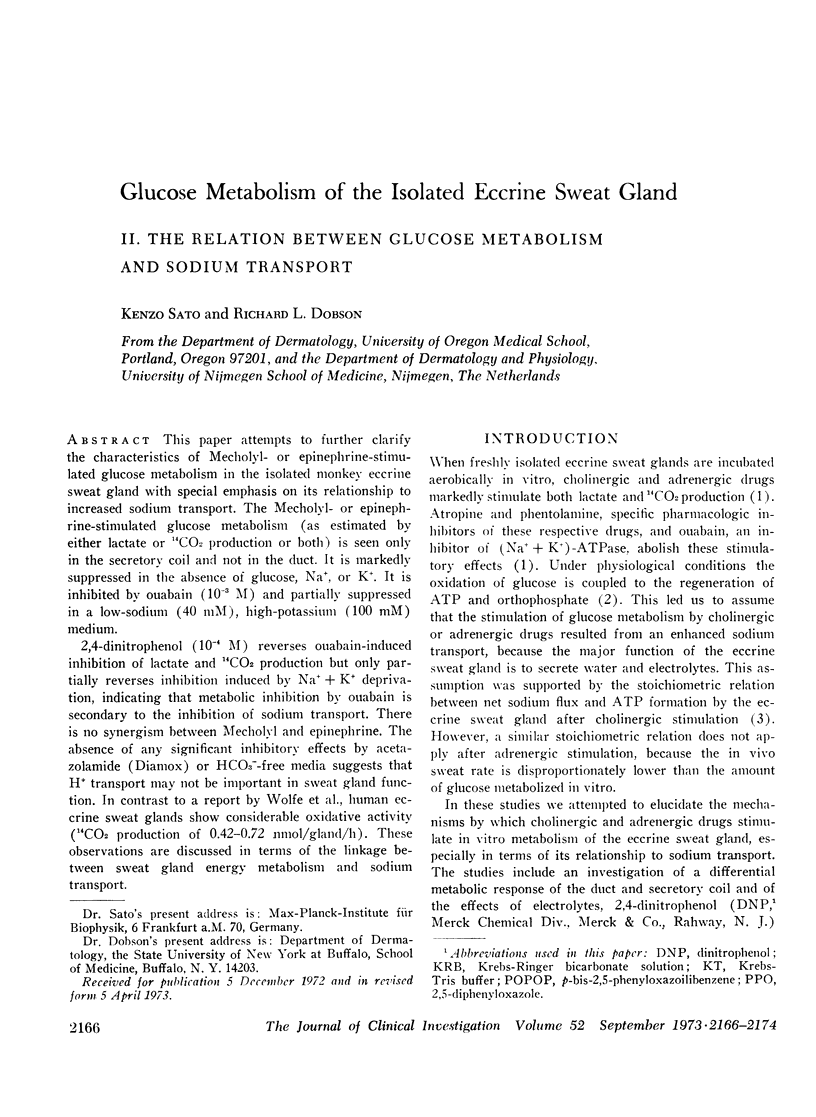
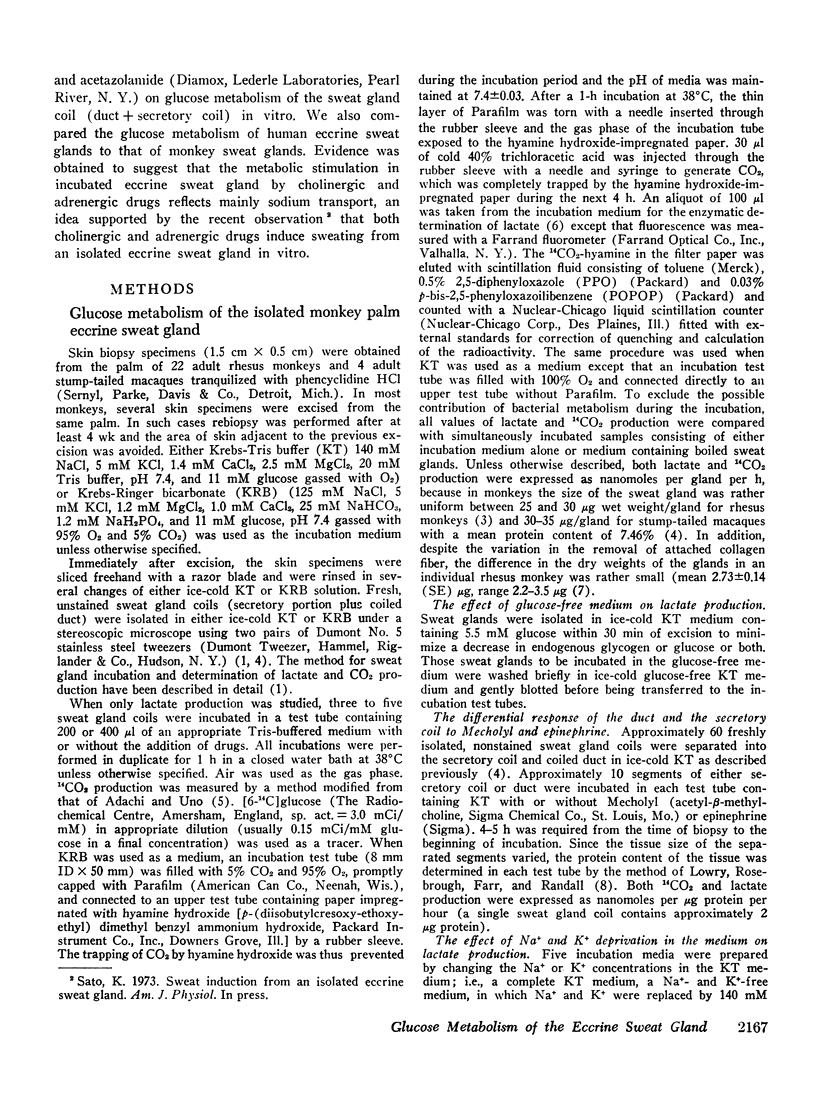
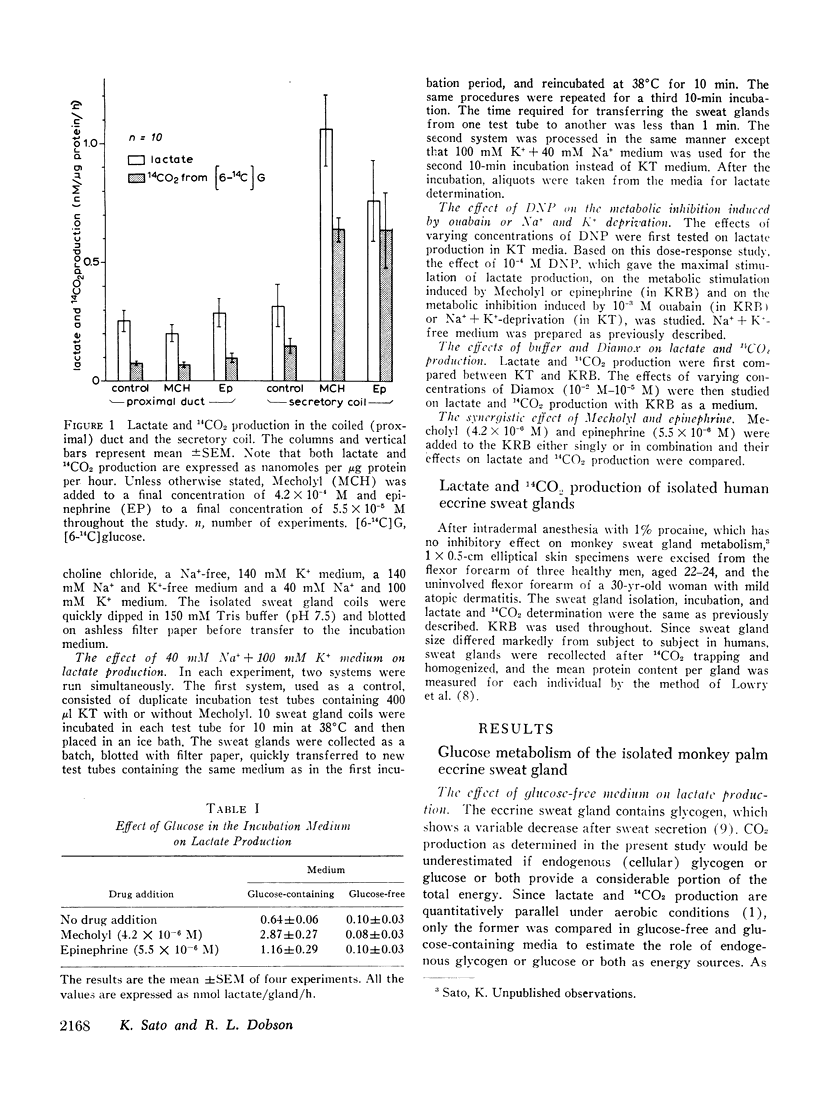
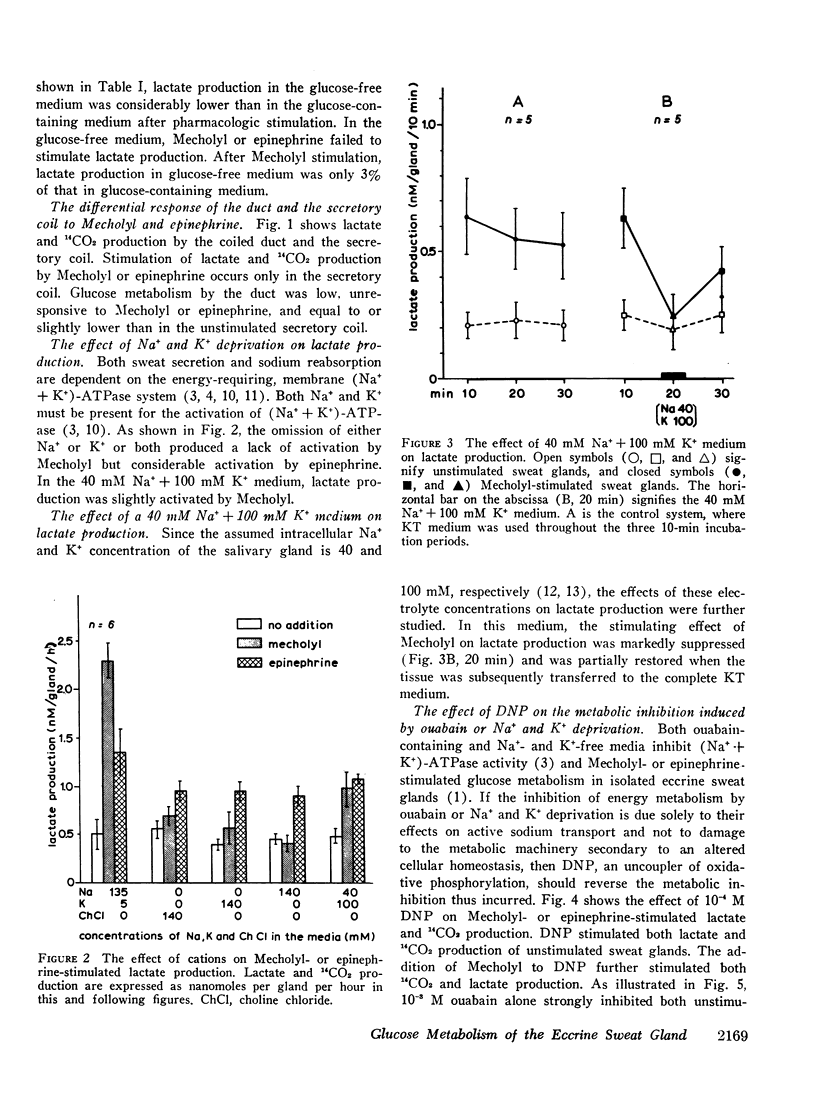
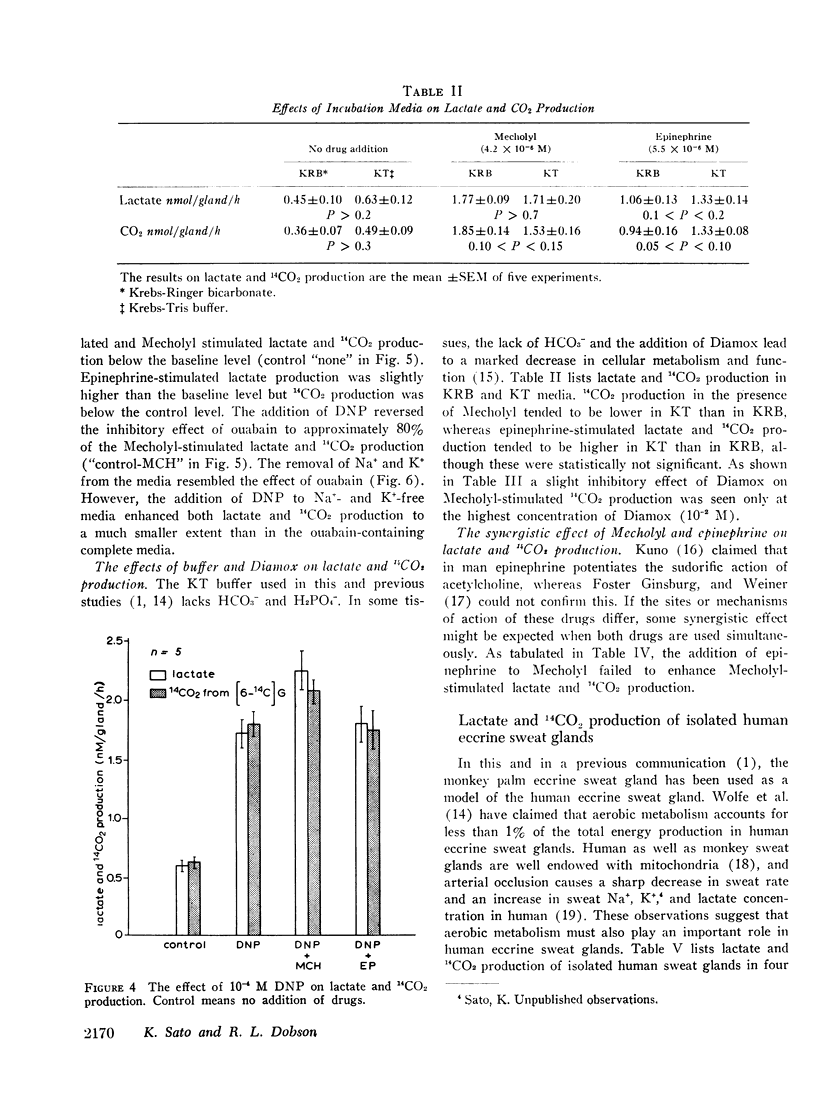
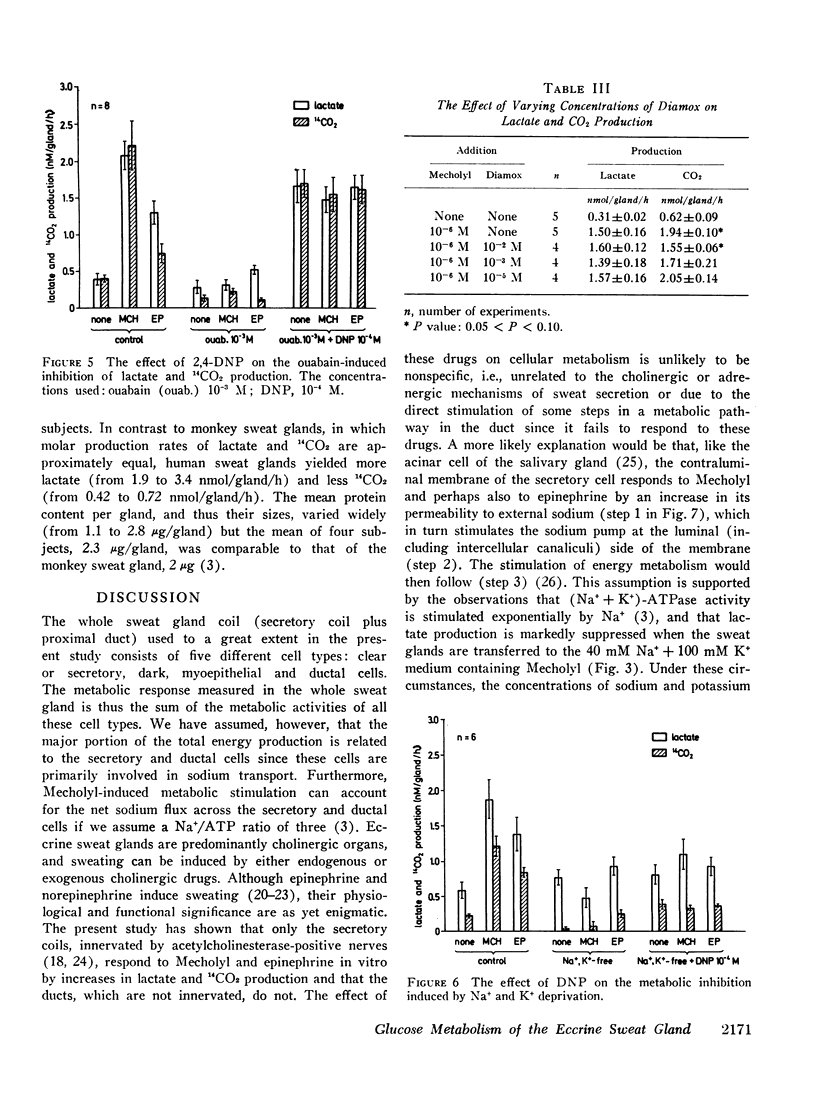
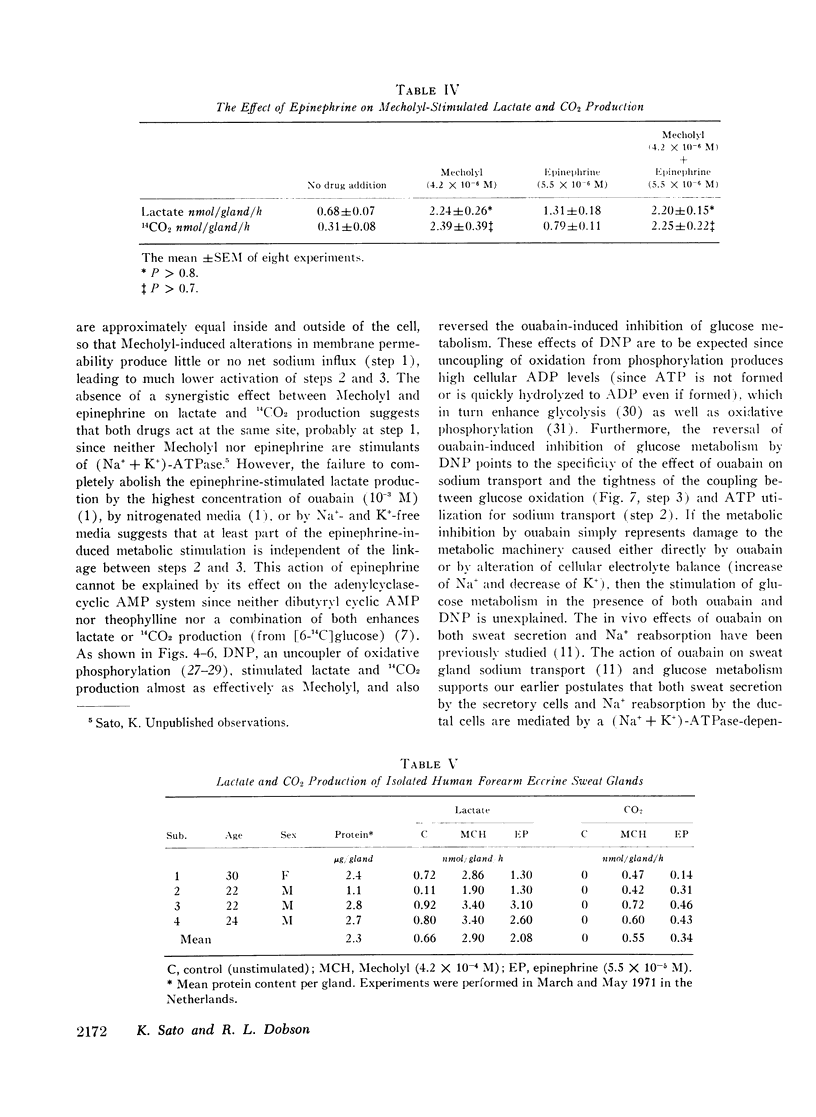
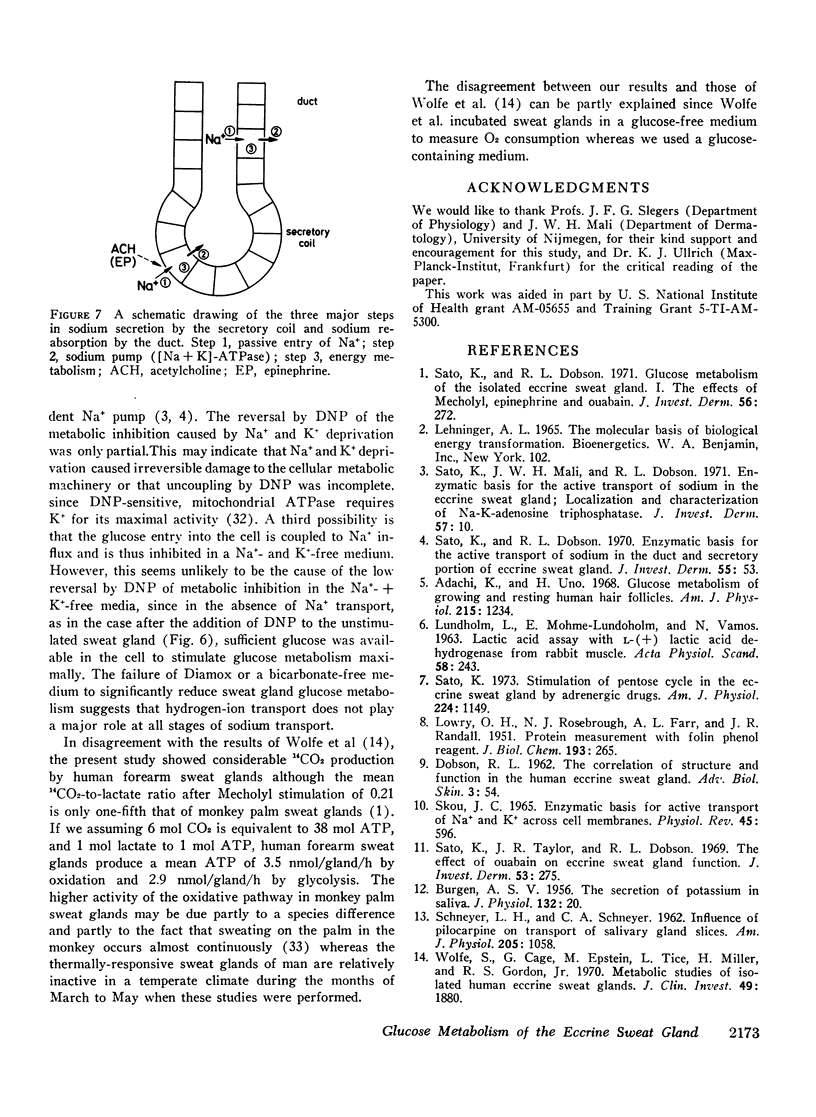
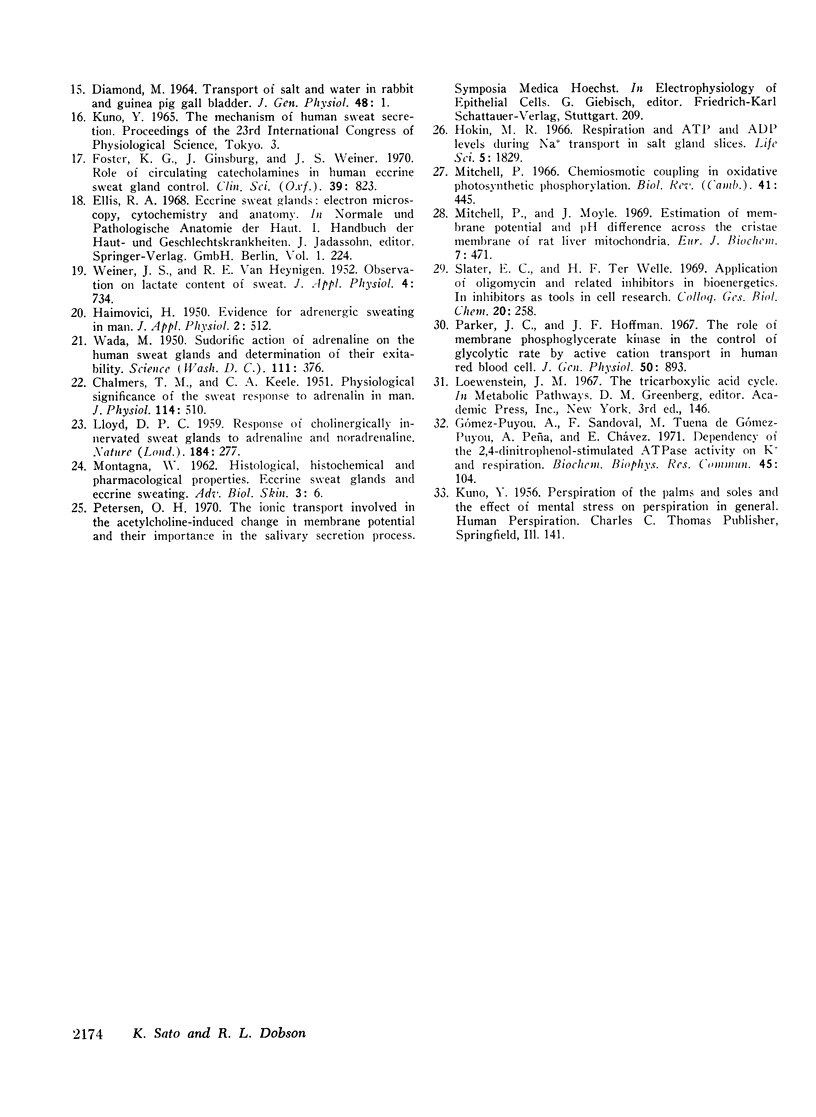
Selected References
These references are in PubMed. This may not be the complete list of references from this article.
- Adachi K., Uno H. Glucose metabolism of growing and resting human hair follicles. Am J Physiol. 1968 Nov;215(5):1234–1239. doi: 10.1152/ajplegacy.1968.215.5.1234. [DOI] [PubMed] [Google Scholar]
- BURGEN A. S. The secretion of potassium in saliva. J Physiol. 1956 Apr 27;132(1):20–39. doi: 10.1113/jphysiol.1956.sp005500. [DOI] [PMC free article] [PubMed] [Google Scholar]
- CHALMERS T. M., KEELE C. A. Physiological significance of the sweat response to adrenaline in man. J Physiol. 1951 Aug;114(4):510–514. doi: 10.1113/jphysiol.1951.sp004640. [DOI] [PMC free article] [PubMed] [Google Scholar]
- DIAMOND J. M. TRANSPORT OF SALT AND WATER IN RABBIT AND GUINEA PIG GALL BLADDER. J Gen Physiol. 1964 Sep;48:1–14. doi: 10.1085/jgp.48.1.1. [DOI] [PMC free article] [PubMed] [Google Scholar]
- Foster K. G., Ginsburg J., Weiner J. S. Role of circulating catecholamines in human eccrine sweat gland control. Clin Sci. 1970 Dec;39(6):823–832. doi: 10.1042/cs0390823. [DOI] [PubMed] [Google Scholar]
- Gomez-Puyou A., Sandoval F., De Gómez-Puyou M. T., Peña A., Chávez E. Dependency of the 2,4-dinitrophenol stimulated ATPase activity on K + and respiration. Biochem Biophys Res Commun. 1971 Oct 1;45(1):104–111. doi: 10.1016/0006-291x(71)90056-8. [DOI] [PubMed] [Google Scholar]
- HAIMOVICI H. Evidence for adrenergic sweating in man. J Appl Physiol. 1950 Mar;2(9):512–521. doi: 10.1152/jappl.1950.2.9.512. [DOI] [PubMed] [Google Scholar]
- Hokin M. R. Respiration and ATP and ADP levels during Na+ transport in salt gland slices. Life Sci. 1966 Oct;5(20):1829–1837. doi: 10.1016/0024-3205(66)90277-3. [DOI] [PubMed] [Google Scholar]
- LLOYD D. P. Response of cholinergically innervated sweat glands to adrenaline and noradrenaline. Nature. 1959 Jul 25;184(Suppl 5):277–278. doi: 10.1038/184277a0. [DOI] [PubMed] [Google Scholar]
- LOWRY O. H., ROSEBROUGH N. J., FARR A. L., RANDALL R. J. Protein measurement with the Folin phenol reagent. J Biol Chem. 1951 Nov;193(1):265–275. [PubMed] [Google Scholar]
- LUNDHOLM L., MOHME-LUNDHOLM E., VAMOS N. Lactic acid assay with L(plus)lactic acid dehydrogenase from rabbit muscle. Acta Physiol Scand. 1963 Jun-Jul;58:243–249. doi: 10.1111/j.1748-1716.1963.tb02645.x. [DOI] [PubMed] [Google Scholar]
- Mitchell P. Chemiosmotic coupling in oxidative and photosynthetic phosphorylation. Biol Rev Camb Philos Soc. 1966 Aug;41(3):445–502. doi: 10.1111/j.1469-185x.1966.tb01501.x. [DOI] [PubMed] [Google Scholar]
- Mitchell P., Moyle J. Estimation of membrane potential and pH difference across the cristae membrane of rat liver mitochondria. Eur J Biochem. 1969 Feb;7(4):471–484. doi: 10.1111/j.1432-1033.1969.tb19633.x. [DOI] [PubMed] [Google Scholar]
- Parker J. C., Hoffman J. F. The role of membrane phosphoglycerate kinase in the control of glycolytic rate by active cation transport in human red blood cells. J Gen Physiol. 1967 Mar;50(4):893–916. doi: 10.1085/jgp.50.4.893. [DOI] [PMC free article] [PubMed] [Google Scholar]
- SKOU J. C. ENZYMATIC BASIS FOR ACTIVE TRANSPORT OF NA+ AND K+ ACROSS CELL MEMBRANE. Physiol Rev. 1965 Jul;45:596–617. doi: 10.1152/physrev.1965.45.3.596. [DOI] [PubMed] [Google Scholar]
- Sato K., Dobson R. L. Enzymatic basis for the active transport of sodium in the duct and secretory portion of the eccrine sweat gland. J Invest Dermatol. 1970 Jul;55(1):53–56. doi: 10.1111/1523-1747.ep12290538. [DOI] [PubMed] [Google Scholar]
- Sato K., Dobson R. L. Glucose metabolism of the isolated eccrine sweat gland. I. The effects of mecholyl, epinephrine and ouabain. J Invest Dermatol. 1971 Apr;56(4):272–280. doi: 10.1111/1523-1747.ep12261004. [DOI] [PubMed] [Google Scholar]
- Sato K., Dobson R. L., Mali J. W. Enzymatic basis for the active transport of sodium in the eccrine sweat gland. Localization and characterization of Na-K-adenosine triphosphatase. J Invest Dermatol. 1971 Jul;57(1):10–16. doi: 10.1111/1523-1747.ep12292046. [DOI] [PubMed] [Google Scholar]
- Sato K. Stimulation of pentose cycle in the eccrine sweat gland by adrenergic drugs. Am J Physiol. 1973 May;224(5):1149–1154. doi: 10.1152/ajplegacy.1973.224.5.1149. [DOI] [PubMed] [Google Scholar]
- Sato K., Taylor J. R., Dobson R. L. The effect of oubain on eccrine sweat gland function. J Invest Dermatol. 1969 Oct;53(4):275–282. doi: 10.1038/jid.1969.147. [DOI] [PubMed] [Google Scholar]
- Schneyer L. H., Schneyer C. A. Influence of pilocarpine on transport by salivary gland slices. Am J Physiol. 1963 Nov;205(5):1058–1062. doi: 10.1152/ajplegacy.1963.205.5.1058. [DOI] [PubMed] [Google Scholar]
- WEINER J. S., VAN HEYNINGEN R. E. Observations on lactate content of sweat. J Appl Physiol. 1952 Mar;4(9):734–744. doi: 10.1152/jappl.1952.4.9.734. [DOI] [PubMed] [Google Scholar]
- Wada M. Sudorific Action of Adrenalin on the Human Sweat Glands and Determination of Their Excitability. Science. 1950 Apr 14;111(2885):376–377. doi: 10.1126/science.111.2885.376. [DOI] [PubMed] [Google Scholar]
- Wolfe S., Cage G., Epstein M., Tice L., Miller H., Gordon R. S., Jr Metabolic studies of isolated human eccrine sweat glands. J Clin Invest. 1970 Oct;49(10):1880–1884. doi: 10.1172/JCI106407. [DOI] [PMC free article] [PubMed] [Google Scholar]


